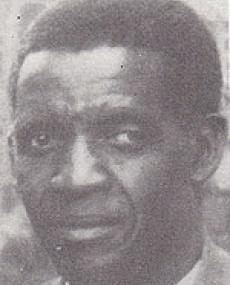
James Arthur Calata was born into a poor farming family at Debe Nek near King Williamstown. His father James Calata was a Presbyterian and his mother Eliza, an Anglican. He trained as a teacher at St.Mathews College and as a priest in the Anglican Church.Calata served as a minister at St. James Mission at Cradock. During that time he took an active part both in Xhosa cultural affairs and in national church affairs, serving as president of the Inter-denominational African Ministers' Federation (IDAMF) and pressing for a larger and more responsible role for Africans, within the Anglican Church.He was influencial in the African National Congress (ANC) in the 1930s to 1940s.After primary school Calata trained to become a teacher while also studying for the Anglican ministry.He joined Bantu Union of Meshack Pelem and after become registerd voter in 1919 and joined the the Cape Voters' Association.In the mid-1928 he was posted to St.James'Mission in the Afrikaans-speaking town of Cradock,where he was to live for the rest of his life.
In 1943 he was nominated for the Bishopric of the Transkei, but pressure from white clergy prevented his election. He played a significant role in synods and missionary conferences in the Diocese of Grahamstown and also in provincial organisations. Religion and politics were inseparable concerns in Calata's life for he believed that Christianity would never develop genuine roots in South Africa until African grievances were dealt with and democracy prevailed.He joined the African National Congress (ANC) in 1930 and in the same year was elected provincial president for the Cape, an office he held until 1949. Port Elizabeth, later a strong Congress centre, established its first ANC branch through his efforts. In 1936 he became Secretary-General of the ANC and was instrumental in having the autocratic Pixley Seme replaced as president, first by Z.R. Mahabane in 1937, then by A.B. Xuma three years later. He was thereafter staunchly loyal to Xuma. Selfless in his dedication to the Congress cause, he took no part in the personal rivalries and disputes that were so often a feature of ANC politics.In 1938 he became president of the Order of St Ntsikana,an organization formed in 1912 to preserve the memory of the first Xhosa convert to Christianity.
Calata combined a Christian perspective with instincts bred in the political atmosphere of the Cape. A basic faith in the value and the future prospects of inter-racial consultation and peaceful reconciliation prevented him from enthusiastically supporting the ANC's election boycott decision of 1946 and of 1948. He appeared to be adopting a cautious wait-and-see attitude towards the new National government, younger militants had already begun to make him a target for their attacks on the Congress old guard. In his capacity as secretary-general, Calata was signatory of the 1949 Programme of Action, but, like Xuma, found the proposal of the Youth League extreme.
Citing his long service and his many responsibilities outside the ANC in 1949, he did not seek to continue to serve either as Cape president or as secretary general. However, unlike Xuma, who retired from active politics after 1949, Calata continued to serve on the ANC national executive committee, where he sought to play a moderating role against what he saw as rising extremist influences. Chosen as ANC senior chaplain in 1950, he later also acted as Congress speaker. During the Defiance Campaign of 1952, he was banned from attending gatherings but was eventually allowed to carry on with his church work, although this came along with much harassment from the government.
In 1956 he chaired the Conference on the Tomlinson Report organised by IDAMF. He was jailed during the 1960 state of emergency. Shortly after his arrest, during a raid on his home, the police found no papers but noticed two historic photographs of ANC leaders on his wall. They became exhibits in one of the earliest cases under the Suppression of Communism Act, and Calata received a six months suspended sentenceand suspended for three years.
.During the same year, he was appointed to the Council of the Anglican College of the Federal Theological Seminary. He was a canon of Grahamstown cathedral from 1959 up to the time of his death. He passed away on 16 June 1983 in Cradock.
Notes
- *New Dictionary of South African Biography vol.1. gives his name as James Arthur.
- *Source from DOE gives Arthur James.
- *Protest to Challenge gives James only as his first name.
- *Several internet sources conflict on the order of the two names.